Microplastics Pollution In The Great Lakes Ecosystem: Summary of Presentations at IAGLR 2014
4Visit the majority of beaches on the Great Lakes and you’ll find plastic debris, and not just on public beaches in large cities. Even Lake Superior has visible plastic debris on remote and otherwise pristine beaches and shorelines. This plastic is a potential hazard to the health of animals and their ecosystems, and its unsightliness damages the tourism industry that so many people enjoy and depend on for their livelihoods. It is not just the large pieces of plastic that are impacting the Great Lakes ecosystem, although these are bad enough (Figure 1).

Figure 1. A fish whose growth was deformed by a plastic bottle ring. This fish was caught in Mexico Bay, Lake Ontario, July 2011. (Credit: Jim Bodenstab)
Microplastics (plastic beads, fibers, pellets, or other pieces generally < 5mm in size) are of particular concern because their small size makes them potentially easily ingestible (Figure 2). Microplastics can find their way into waterways through pellet spills in factories and during off-loading (plastic pellets are the raw materials used to make many of the plastic products surrounding you right now), plastic beads used in cosmetics and cleaners washing down drains, plastic fibers shed from clothing in washing machines and draining to the sewer, and larger plastic pieces breaking down into smaller fragments through photodegradation (sunlight breaks plastic into smaller and smaller pieces) and abrasion.

Figure 2. Comparison of microplastic pellets and fragments to a penny.
This session at the 2014 meeting of the International Association of Great Lakes Research (IAGLR) was organized to increase awareness of microplastics in the Great Lakes and to showcase some of the most recent research on microplastics pollution in freshwater systems. It also supported NOAA’s Great Lakes Land-based Marine Debris Action Plan (Goal 1, Objective 2, Action Strategy 2).1
Prof. Sherri A. Mason of the State University of New York Fredonia presented the “Great Lakes Plastic Pollution Survey.” Figure 3 shows the results of the first ever survey for plastic pollution within the open-waters of the Great Lakes, work conducted in 2012.2 Data from surveys conducted in 2013 in Lakes Michigan, Ontario and Erie were also presented. Of the nearly 150 samples obtained thus far, all but two contained plastic, with counts roughly increasing as you follow the flow of water from Superior to Huron and Michigan to Erie to Ontario and out the Saint Lawrence Seaway. Furthermore, nearly 70% of all the plastic sampled within the Great Lakes was found in the smallest size classification- one third to one millimeter in diameter.

Figure 3. Distribution of plastic particles by count for 21 samples collected in three of the Laurentian Great Lakes.
Alex Driedger, a Graduate Student at the University of Waterloo, presented “Mapping Marine Debris in the Great Lakes.” Litter monitoring data generated between 2008 and 2013 by the Alliance for the Great Lakes’ Adopt-a-BeachTM program were used to delineate the sources and distribution of plastic debris on Great Lakes’ beaches of the United States. On average, Lake Erie beaches were found to have the greatest percentage of litter comprised of plastic (91%, Figure 4).

Figure 4. Locations of beach surveys, number of surveys conducted, and percentages of litter comprised of plastic for the five Great Lakes. All data collected by Adopt-a-Beach (TM) volunteers in 2013.
Prof. Patricia Corcoran of the University of Western Ontario presented an overview of “Distribution and Degradation of Plastic Debris along the Shorelines of the Great Lakes, North America,” recently published in the Journal of Great Lakes Research3. The results included a predominance of 1-5 cm size plastic fragments near large urban centers along Lake Erie, whereas plastic pellets and intact products were more common along Lake Huron and Lake St. Clair, respectively (Figure 5). The presence of breakwaters and retaining walls along Lake St. Clair has resulted in less trapping of plastic debris than on other lake shorelines.

Figure 5. Relative abundances of different types of plastic debris along shorelines of a) Lake Erie, b) Lake St. Clair, and c) Lake Huron. n = number of debris items counted. Modified from Zbyszewski et al. (2014).
Todd Norris, an undergraduate student at the University of Western Ontario, presented “Transport Pathways and Accumulation Rates of Plastic Debris near Humber Bay, Lake Ontario.” An average accumulation rate of 1500 pellets, 405 fragments, and 91 intact items were determined over two 3-week intervals by sampling plastics from within a quadrat measuring 25 m x 4 m (samples of debris found are shown in Figure 6). The similarity in color and composition of the pellets collected from the riverbank and shoreline suggest that the Humber River does act as a pathway for plastics transport into the lake.

Figure 6. Plastic debris types sampled from Humber Bay site. A) pellets, B) fragments, C) intact products, D) styrofoam.
Paul Helm, of the Ontario Ministry of the Environment, presented on “Microplastics in Wastewater Effluents and an Urban Stream Entering Lake Ontario.” Initial sampling revealed that of the material collected downstream of a wastewater treatment plant, a large proportion of what visually resembled plastic was found to be cellulosic material after drying, sorting, and verification by Fourier Transform Infrared (FTIR) analysis. However, synthetic fibers, microbeads, and other plastic debris were also present.
Dr. Melissa Duhaime of the University of Michigan presented a poster on “Microplastics in the Great Lakes: Towards establishing a long-term multidisciplinary research platform to assess the impact of microplastics on Laurentian Great Lakes ecosystem health.” This is a cross-disciplinary and multiscale approach that was assembled to define the ecological and environmental health risks of plastics in the Great Lakes. One of the many areas that will be explored is defining plastic-dwelling community composition and function, a virtually unexplored topic (Figure 7).

Figure 7. Mature biofilms thriving on the surface of Great Lakes plastic debris. Identifiable here in the attached matrix are diatoms and coccoid microbial cells. DNA sequencing will be used to explicitly identify community members.
Dr. Laura K. Alford of the University of Michigan ended the session with a call to action with “The Next Step: Microplastic Pollution Prevention.” To further prevent microplastics pollution, a prototype self-cleaning microplastic filter will be developed for use in wastewater treatment plants. However, information concerning all forms of plastics pollution must continue to be disseminated, and funding must be made available for studies on the effects of plastic pollution on the Great Lakes ecosystem and for research on potential solutions to the issue.
References
- 1Lowe, S.E. (ed.) (2014). The Great Lakes Land-Based Marine Debris Action Plan. NOAA Technical Memorandum NOS-OR&R-49.
- 2Eriksen, M., S. A. Mason, S. Wilson, C. Box, A. Zellers, W. Edwards, H. Farley, and S. Amato (2013). Microplastic Pollution in the Surface Waters of the Laurentian Great Lakes, Marine Pollution Bulletin, 77, 177.
- 3Zbyszewski, M., Corcoran, P. L., Hockin, A. (2014). “Comparison of the distribution and degradation of plastic debris along shorelines of the Great Lakes, North America,” Journal of Great Lakes Research, 40(2), p. 288-299, June 2014.
References For Presentations
- Alford, L.K. (2014). “The Next Step: Microplastic Pollution Prevention,” 57th Annual Conference on Great Lakes Research (IAGLR 2014), Hamilton, Ontario.
- Corcoran, P.L., Zbyszewski, M., and Hockin, A. (2014). “Distribution And Degradation Of Plastic Debris Along The Shorelines Of The Great Lakes, North America,” 57th Annual Conference on Great Lakes Research (IAGLR 2014), Hamilton, Ontario.
- Driedger, A., Dürr, H., Mitchell, K., Lyandres, O., Cross, J., and Van Cappellen, P. (2014). “Mapping Marine Debris In The Great Lakes,” 57th Annual Conference on Great Lakes Research (IAGLR 2014), Hamilton, Ontario.
- Helm, P., Sims, A., Just, E., Thibeau, J. And Toner, D. (2014). “Microplastics In Wastewater Effluents And An Urban Stream Entering Lake Ontario,” 57th Annual Conference on Great Lakes Research (IAGLR 2014), Hamilton, Ontario.
- Mason, S.A., Eriksen, M., and Edwards, W.J. (2014). “Great Lakes Plastic Pollution Survey,” 57th Annual Conference on Great Lakes Research (IAGLR 2014), Hamilton, Ontario.
- Norris, T., and Corcoran, P.L. (2014). “Transport Pathways And Accumulation Rates Of Plastic Debris Near Humber Bay, Lake Ontario,” 57th Annual Conference on Great Lakes Research (IAGLR 2014), Hamilton, Ontario.




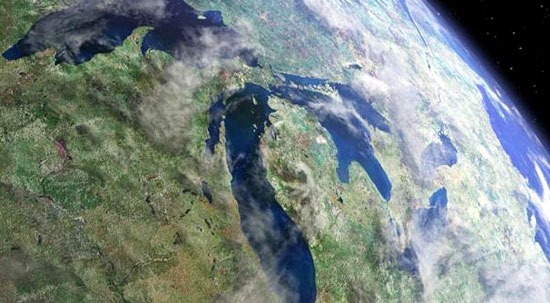
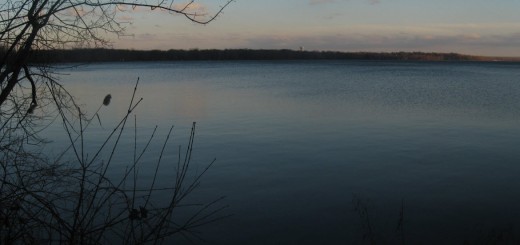

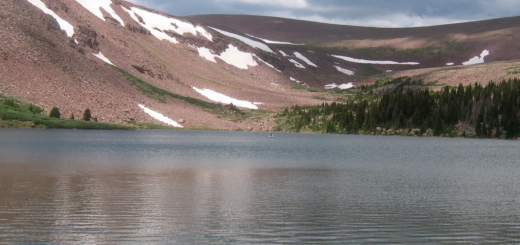


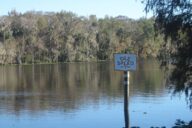
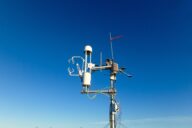


What percentage is microplastics in the great lakes?
[…] “…The evidence on microbeads has existed for almost a decade. A landmark study on North America’s Great Lakes in 2012 used specially designed nets to drag the surface, finding tiny polymer spheres everywhere. There […]
[…] Microplastics on top of a penny. pc: lakescientist […]
[…] Lake Scientist/via […]